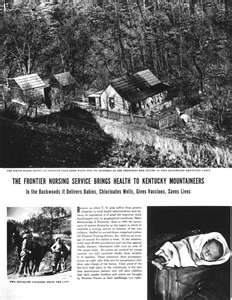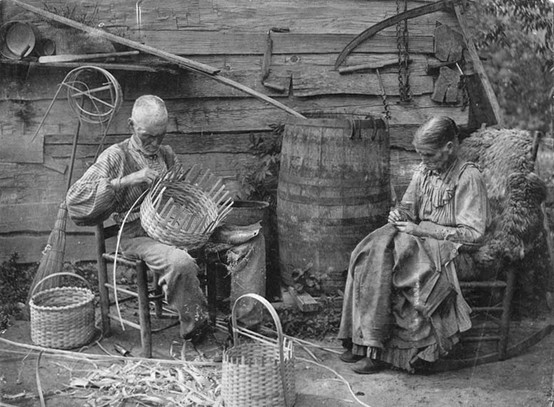Mountain Traditions, Stories & Superstitions
Mountain Medicine
Long before, and even after, doctors were common in the region, our people had to treat themselves. Some even carry on some of these traditions even today.
I recall as a teenager having a tooth extracted that caused me a lot of trouble. It bleed for a couple of days. My grandfather came to me and quoted verses from the Bible that stopped the bleeding. Now you can believe this or not but I have learned to never doubt the power of God's Word. The verses are:
"And when I passed thee and I saw thee polluted in thine own blood, I said unto thee when thoust was in thy blood, 'Live,' yea, I said unto thee when thou wast in thy blood, 'Live.'" (Ezekiel 6:6)
"To another faith by the same spirit, to another the gifts of healing by the same spirit." (First Corinthians 12:9)
Long before, and even after, doctors were common in the region, our people had to treat themselves. Some even carry on some of these traditions even today.
I recall as a teenager having a tooth extracted that caused me a lot of trouble. It bleed for a couple of days. My grandfather came to me and quoted verses from the Bible that stopped the bleeding. Now you can believe this or not but I have learned to never doubt the power of God's Word. The verses are:
"And when I passed thee and I saw thee polluted in thine own blood, I said unto thee when thoust was in thy blood, 'Live,' yea, I said unto thee when thou wast in thy blood, 'Live.'" (Ezekiel 6:6)
"To another faith by the same spirit, to another the gifts of healing by the same spirit." (First Corinthians 12:9)

Do you have any interesting stories about folk medicine? Let us know so we can share it with others.

On this page we will look at many of the unique aspects of our culture and traditions and what many call the "Old Time Ways."

Bill Monroe's mandolin. Kentucky is the birthplace of Bluegrass music.
"Nothing grows on this earth in vain."--Nicholas Culpepper, 1640 (Famous Herbalist)
Our ancestors had a remedy for almost every ailment. They used the resources they had at the time which grew bountifully around them here in the mountains. I recently read "Folk Medicine of Appalachia: A Vanishing Tradition" by Dr. Hassan Amjad. He has spent many years studying the folk remedies of the people of Appalachia. Below are some of his findings.
Blood Root is one of the earliest of the Spring flowers. It was used by Indians as body paint. Many of our ancestors used it to induce vomiting and as an expectorant. Mixed with vinegar, it was used as an antiseptic. Today, blood root is used in toothpaste and mouthwash.
Blackberries were used for the flu as well as for diarrhea.
Buckeyes, often called "horse chestnuts," were used to promote circulation. The bark of the tree was used for diarrhea. Some of our ancestors carried a buckeye in their pocket for arthritis.
Catnip was used for infant colic, skin hives, as a tonic for nerves, and for stomach problems. The leaves were also chewed for toothaches and the juice from the leaves was sometimes used to repel insects.
Dandelions were used as a laxative and for heartburn.
Dogwood was used in the Colonial period and Civil War days for fever.
Elderberry was and is still used by some to make wine. The inner bark was mixed with oil to make a salve.
Ginger was used for nausea, vomiting, cough, and arthritis.
Horehound, a three foot plant with fuzzy leaves, was used for cough.
We will be updating this article soon. In the meantime, if you have any home or folk remedies you would like to share, email me at revgregdavidson@live.com.
Our ancestors had a remedy for almost every ailment. They used the resources they had at the time which grew bountifully around them here in the mountains. I recently read "Folk Medicine of Appalachia: A Vanishing Tradition" by Dr. Hassan Amjad. He has spent many years studying the folk remedies of the people of Appalachia. Below are some of his findings.
Blood Root is one of the earliest of the Spring flowers. It was used by Indians as body paint. Many of our ancestors used it to induce vomiting and as an expectorant. Mixed with vinegar, it was used as an antiseptic. Today, blood root is used in toothpaste and mouthwash.
Blackberries were used for the flu as well as for diarrhea.
Buckeyes, often called "horse chestnuts," were used to promote circulation. The bark of the tree was used for diarrhea. Some of our ancestors carried a buckeye in their pocket for arthritis.
Catnip was used for infant colic, skin hives, as a tonic for nerves, and for stomach problems. The leaves were also chewed for toothaches and the juice from the leaves was sometimes used to repel insects.
Dandelions were used as a laxative and for heartburn.
Dogwood was used in the Colonial period and Civil War days for fever.
Elderberry was and is still used by some to make wine. The inner bark was mixed with oil to make a salve.
Ginger was used for nausea, vomiting, cough, and arthritis.
Horehound, a three foot plant with fuzzy leaves, was used for cough.
We will be updating this article soon. In the meantime, if you have any home or folk remedies you would like to share, email me at revgregdavidson@live.com.